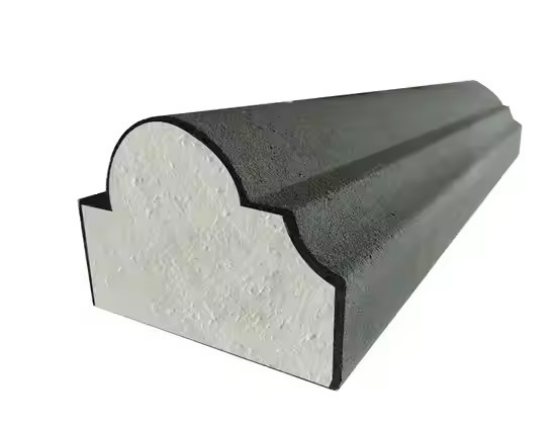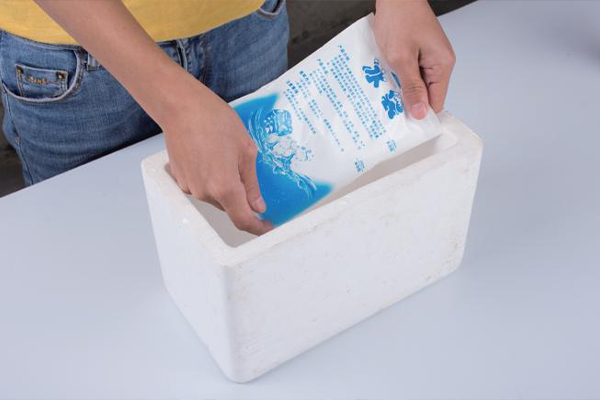في عالم الأعمال اليوم، تعمل التعبئة والتغليف أكثر من مجرد حماية المنتجات - يجب أن تفعل ذلك بطريقة مدروسة. مع تزايد المخاوف حول الكوكب ، يتغير مجال التعبئة والتغليف كثيرا. جزء كبير من هذا التغيير هو استخدام مواد الرغوة المستدامة ، خاصة للحفاظ على الأمور آمنة أثناء الشحن. من بين هذه الخيارات ، يلمع البوليستيرين الموسع (EPS) لأنه يمكن استخدامه بطرق عديدة ويصبح أكثر ملاءمة للأرض.

الطلب المتزايد على حلول التعبئة والتغليف الصديقة للبيئة
الدعوة إلى التعبئة والتغليف اللطيفة للطبيعة أقوى من أي وقت مضى. هذا الدفع يأتي من ما يريده المشترين والقواعد التي وضعتها الحكومات.
تحويل تفضيلات المستهلكين نحو الاستدامة
المتسوقون اليوم يعرفون المزيد عن كيفية تأثير خيارات الشراء الخاصة بهم على الأرض. يريدون من الشركات أن تختار المواد الخضراء التي تقلل من القمامة وتساعد في إعادة استخدام الأشياء. المواد الرغوية المستدامة ، مثل EPS المعاد استخدامها ، تناسب هذه الحاجة. يحافظون على المواد بشكل جيد دون الإضرار بالطبيعة.
اللوائح الحكومية والمعايير البيئية
في جميع أنحاء العالم، يقوم القادة بإصدار قوانين أكثر صرامة حول نفايات التعبئة والتغليف وكيفية إعادة استخدامها. هواشنغ تقدم خيارات EPS المستدامة التي تلبي قواعد صارمة لأشياء مثل الأدوات الطبية (الفئة الثانية / الثالثة) ، والأدوية الحيوية (بما في ذلك لقاحات mRNA) ، وتسليم الأغذية الطازجة (متوافقة مع HACCP). كما تتبع HUASHENG توجيه الاتحاد الأوروبي للتغليف والتغليف 94/62 / EC وتتجاوز معايير GB / T 40006-2021 الصينية للبلاستيك المعاد تدويره.

مواد الرغوة الشائعة المستخدمة في التعبئة والتغليف
مواد الرغوة مهمة للغاية للحشوة ، والحفاظ على الأشياء الدافئة أو الباردة ، والتأكد من أن العناصر تبقى قوية أثناء نقلها أو تخزينها.
البوليستيرين الموسع (EPS) وخصائصه
البوليستيرين الموسع هو الاختيار الأعلى للرغوة لأنه خفيف ، رائع في امتصاص الاصطدامات ، ويحافظ على الحرارة داخل أو خارج. للاحتياجات من الشحن والتعبئة ، تعطي الشركة خيارات رغوة EPS خفيفة ولكن صعبة.
البولي إيثيلين (PE) والبولي يوريثان (PU) رغوة
الرغوة PE تنحني بسهولة ، ولا تسمح للماء من خلال ، وغالبا ما تستخدم للأدوات. رغوة PU رائعة للتخفيف ولكن أصعب إعادة تدويرها من EPS أو PE. هذه الرغوة لها استخدامات خاصة ولكن تكافح مع كونها لطيفة للبيئة.
مقارنة بين مواد الرغوة التقليدية والمستدامة
عادة ما تأتي الرغوة القديمة من المواد الطازجة القائمة على الزيت وهي صعبة لإعادة استخدامها. من ناحية أخرى، HUASHENG إعادة استخدام 300،000 طن من EPS كل عام. وهذا يوفر 1,500,000 طن من النفط الخام و 1,200,000 طن من ثاني أكسيد الكربون. الخيارات الخضراء مثل EPS المعاد تدويرها تعمل بنفس القدر ، لكنها تترك بصمة أصغر بكثير على الطبيعة.
الفوائد الرئيسية لمواد الرغوة المستدامة في التعبئة والتغليف
المواد الرغوية الخضراء ليست جيدة فقط للأرض. كما أنها تجلب مزايا حقيقية للشركات.
أداء خفيف الوزن ودائم
EPS هو المفضل لأنه ليس ثقيلا ولكن لا يزال قويا جدا. هذه الخيارات تبقي المنتجات آمنة أثناء التنقل. فهي تحمي من الصدمات والاهتزازات والضربات التي يمكن أن تكسر الأشياء.
العزل الحراري وقدرات امتصاص الصدمات
الحفاظ على درجة الحرارة الصحيحة مهم جدا في مجالات مثل توصيل الطعام أو الأدوية. HUASHENG عناصر رغوة EPS مدهشة في عقد في الحرارة أو البرد. وهذا يقلل من استهلاك الطاقة في المباني. كما يحافظ على السلع الحساسة آمنة أثناء الرحلات.
فعالية التكلفة خلال دورة حياة المنتج
يمكن للذهاب مع الرغوة المستدامة توفير المال على المدى الطويل. يستخدم مواد أقل ، ويقلل من البضائع المكسورة أثناء الشحن ، ويسهل إعادة تدويرها. انخفضت تكاليف التعبئة والتغليف بنسبة 28%. ارتفعت درجات ESG للعملاء بنسبة 22 نقطة. بالإضافة إلى ذلك ، فازوا بجائزة تصميم iF الألمانية لعام 2024.
الفوائد البيئية لاستخدام الرغوة المستدامة
الرغوة الصديقة للأرض تساعد على الأهداف التجارية وصحة عالمنا.
تقليل بصمة الكربون أثناء الإنتاج
مع طرق إعادة التدوير الذكية مثل الاسترداد الميكانيكي ، والتي توفر 89٪ من الطاقة ، خفضت هواشنغ بصمتها الكربونية بنسبة 72٪ مقارنة بإنتاج EPS الجديد.
إعادة تدوير وإعادة استخدام الرغوة المستدامة
الكثير من الرغوة القديمة تتراكم كقمامة في مكب النفايات. لكن مضغوطات هواشنغ الخاصة بتقلص رغوة EPS إلى 1/90 من حجمها الأول. وهذا يجعل من السهل إعادة الاستخدام في المواد الجديدة ويعزز إعادة التدوير في جميع أنحاء العالم.
خيارات التحلل البيولوجي والاستقرار
معظم الرغوة الصناعية لا تتحلل بشكل طبيعي. ومع ذلك ، تعمل أفكار جديدة على جعلها قابلة للتسميد مع الإضافات القائمة على الطبيعة. هذا لن يضعف مدى عملهم بشكل جيد.
البوليستيرين الموسع (EPS) كمادة تغليف مستدامة
كانت الـ EPS تعتبر سيئة للأرض. الآن، بفضل الأفكار الجديدة، إنه خيار أخضر قوي.
التقدم التكنولوجي في استدامة EPS
لقد جعلت خطوات جديدة للأمام EPS أفضل بكثير للكوكب.
إضافات مضادة للاشتعال لتطبيقات أكثر أمانا
عززت بت EPS المضادة للشعلة B1 توفير الطاقة في المباني بنسبة 14٪. كما خفضوا وقت المشروع بنسبة 18 يوما مقارنة باستخدام الصوف الصخري.
EPS المحسنة بالجرافيت لتحسين الكفاءة
EPS المعدل بالجرافيت يدفع أشعة الحرارة إلى الوراء ، مما يجعلها مثالية للشحن البارد أو العزل المنزلي حيث يكون حجب الحرارة القوي ضروريًا.
البنية التحتية لإعادة تدوير EPS وإمكانات الاقتصاد الدائري
بنيت هواشنغ نظام كامل يدعم دورة إعادة الاستخدام. إنهم يحولون EPS القديم إلى عناصر يومية باردة ومواد المصنع. إعدادهم الحلقة المغلقة يعني عدم وجود نفايات على العديد من الاستخدامات.
التحديات والاعتبارات عند اختيار الرغوة المستدامة
حتى مع إيجابياتها ، فإن اختيار أفضل رغوة خضراء يتطلب التفكير الدقيق.
التوازن بين الأداء والتأثير البيئي
ليس كل الرغوة الخضراء تعمل بنفس الطريقة. تحتاج الشركات إلى وزن مقدار الوزن الذي يمكن أن تحمله ، وكيفية التعامل مع الحرارة ، وإذا كانت تقاوم النار. ثم يجب عليهم مطابقة ذلك مع أهداف إعادة التدوير أو التحلل بشكل طبيعي.
توافر سلسلة التوريد وآثار التكلفة
أسعار المواد المعاد استخدامها تزداد عدالة. ولكن الحصول عليها لا يزال يعتمد على إعدادات إعادة التدوير المحلية أو قواعد المنطقة. التعاون مع الموردين المهرة يقلل من هذه المخاطر.
هواشنغ: مورد موثوق به لحلول EPS عالية الأداء
وبما أن كونها خضراء يصبح مفتاحا لخطط التعبئة والتغليف ، فإن شركة لانجو هواشينغ للمواد الجديدة المحدودة تبرز باسم رائد في صنع ذكي وصديق للأرض. يقدمون إجابات قوية من البوليستيرين الموسع.
نظرة عامة على درجات منتجات HUASHENG
مجموعة واسعة من المواد تناسب العديد من الاحتياجات مع الالتزام بالقواعد الخضراء العالية:
EPS الصف المشترك للتطبيقات العامة
مثالية للتعبئة العادية حيث التكلفة المنخفضة تلبي الثقة.
درجة مضادة للشعلة للاستخدامات الحرجة للسلامة
يستخدم على نطاق واسع في أعمال البناء حيث لا يمكن تجاهل السلامة من الحرائق.
الصف الجرافيت لتحسين كفاءة العزل
يعطي حظر الحرارة من الدرجة الأولى ، رائع للشحن البارد أو المنازل الموفرة للطاقة.
درجة حماية البيئة للمبادرات الخضراء
مصنوع من المواد المعاد استخدامها، وتلبي قواعد الكربون الصارمة مثل ISO 14067: 2018. علامة الكربون لطن واحد من البولي ستيرين القابل للتوسع المتجدد (R-EPS) هي 719.14 كيلوغرام من CO ₂ e.
الكربون الأسود الصف لمقاومة الأشعة فوق البنفسجية والمتانة
صممت للاستخدام في الهواء الطلق حيث الوقوف في مواجهة الطقس هو المفتاح.
REPS مخصصة لتلبية متطلبات العملاء المحددة
العمل مع مراكز الدراسة العليا، HUASHENG تبقى في المقدمة. يخلقون إجابات جديدة تتطابق مع احتياجات المشترين المتغيرة.
استنتاج: لماذا تتوافق مواد الرغوة المستدامة مع احتياجات التعبئة والتغليف الحديثة
مواد الرغوة الخضراء مثل البوليستيرين الموسع ليست مجرد نسخ احتياطية بعد الآن. وتصبح بسرعة المعيار. مع عملها الصلب وميزات إعادة الاستخدام ، تظهر HUASHENG كيف يمكن للأفكار الجديدة في كونها خضراء تغيير عادات التعبئة والتغليف في جميع أنحاء العالم مع تخفيف الحمل على الطبيعة.

الأسئلة الشائعة:
Q1: ما الذي يجعل البوليستيرين الموسع خيار مستدام مقارنة بالرغوة الأخرى؟
ج: نمو البوليستيرين الموسع الكثير مع طرق إعادة التدوير الجديدة. أدوات التقلص عالية التقنية في هواشنغ تقلل من الحجم بنسبة تصل إلى 50: 1 مع الحفاظ على المواد جيدة. وهذا يسمح بإعادة استخدامها في العديد من المجالات. بالإضافة إلى ذلك، تعيد الشركة استخدام أكثر من 300،000 طن سنوياً، مما يوفر طناً من النفط الخام. وهذا يجعلها أكثر خضرة بكثير من الرغوة القديمة بدون أنظمة إعادة الاستخدام.
Q2: هل يمكن لمواد الرغوة المستدامة أن تتطابق مع أداء رغوة التعبئة والتغليف التقليدية؟
ج: نعم، يمكنهم. الرغوة الخضراء الجديدة، مثل EPS المعزز بالجرافيت أو الآمن من اللهب، تلبي أو تفوز الرغوة القديمة في التحكم في الحرارة أو السلامة. على سبيل المثال، زادت أجزاء مضادة للشعلة من الدرجة B1 من توفير الطاقة بنسبة 14٪. كما خفض وقت المشروع بنحو ثلاثة أسابيع مقارنة بخيارات الصوف الصخري.
Q3: هل HUASHENG قادرة على تخصيص حلول الرغوة بناء على احتياجات التعبئة والتغليف المحددة؟
ج: بالتأكيد. HUASHENG الحرف REPS مخصصة باستخدام مختبرات التوأم الرقمية. وتغطي هذه البنوك المادية وأنظمة النماذج. هذا يضمن أن كل مشتري يحصل على أفضل مزيج لاحتياجاته ، من المعدات الطبية إلى سلامة الأدوات.






